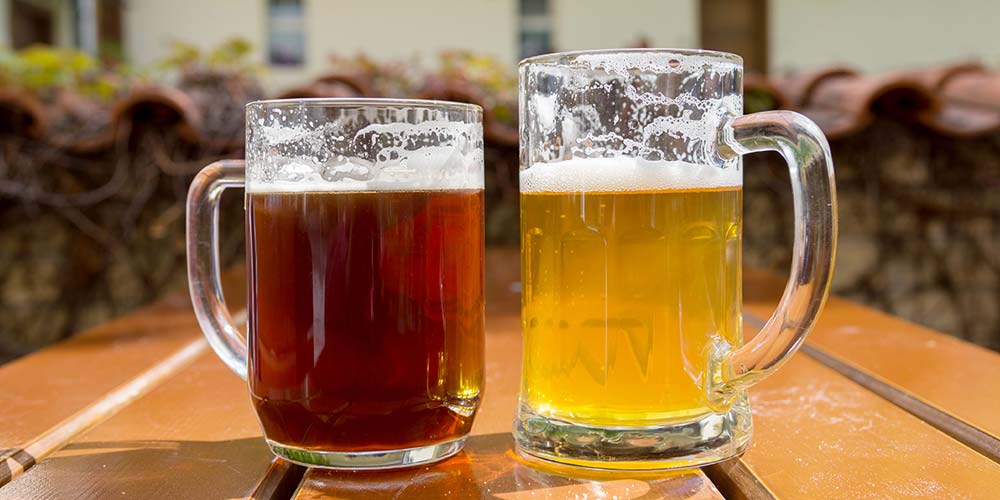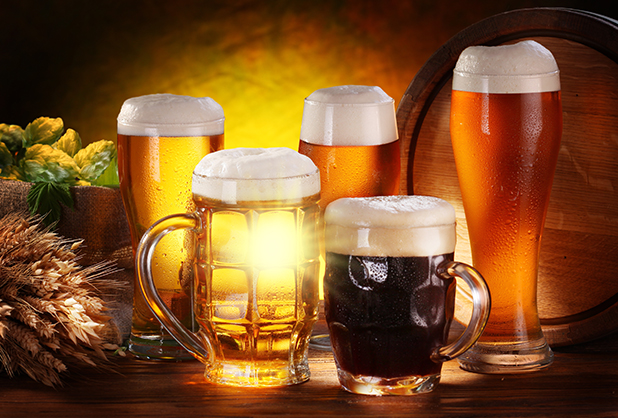Table of Contents
*This post may contain affiliate links. As an Amazon Associate we earn from qualifying purchases.
Among the various types of beer available on the market, the pilsner remains the most popular in the world. What is a pilsner, though, and what draws so many to this specific type of beer? How can you tell a real brew from a knockoff on the store shelf?
Pilsners are by and far one of the most unique beer selections on the market, and their following proves that. From their brewing process to the way they are served, every aspect is carefully curated to bring about the best experience possible. Whether you’re considering trying one for the first time or are an avid enthusiast, this is what makes a pilsner stand out from the crowd.
A Rich History

This light colored, frothy brew finds its roots amongst a group of Plzen (Pilsen) brewers. Plzen was founded by King Wenceslas II all the way back in 1295. This town quickly became a brewing center once the king granted its citizens the right to brew their own beer.
The town’s first commercial brewery opened in 1307, spawning guilds dedicated to the profession. The practice became so popular that King Wenceslas earned the title Patron Saint of Brewers. By the 18th century, new advancements in technology allowed beer makers the ability to use thermometers and hydrometers during their craft, as well as a new malting process that made lighter brews possible.
As the century went on, outsiders were soon brought into the town tasked with the purpose of teaching local brewers the fermentation processes used to perfect larger brewing methods in the rest of the country. After plenty of trial and error, a group of beer enthusiasts opened the doors of the Pilsner Urquell with a brand new creation.
Out of their barrels poured a clear, light-colored liquid that stunned a nation used to darker beer filling their mugs. Thus, the Pilsner was born into existence.
What Makes It A Pilsner?

The pilsner beer remains as unique today as it did back in 1842, though many companies throw the name around with a variety of remakes or reinventions. A true Plzen Pilsner tastes nothing like the watery, mass-marketed products often found on six pack shelves. Those dedicated to the craft follow strict brewing guidelines for the bohemian pilsner set forth by the Beer Judge Certification Program Style Committee.
Its appearance must be a pale gold that you can see through from one end of the glass to the other. The head must be dense and creamy, lasting the majority of your drinking experience. When poured correctly, the head should be roughly one-third of the glass before it begins to simmer down.
The aroma should be clean and rich with the sophisticated scent of malt. Saaz hops are used to make the pilsner, giving it the spicy notes distinctive to its style. Brewers may include a slight butter-like flavor, but never add anything even close to fruit.
Pilsner bodies should stay medium and possess a very mild carbonation. The taste is meant to be rich, with spicy tones rounding out the complex malt flavor. There’s a slight bitterness to this beer, one that follows through on the aftertaste, but it must finish crisp if it wants to make the Beer Judge Certification Program Style Committee certification.
Here are a few excellent examples of Beer Judge Certification Program Style Committee approved pilsners:
- Pilsner Urquell: Yes, the exact same brewery from 1842 is still in existence today.
- Pravda: This beer comes from Oregon, and won the Great American Beer Festival in 2013.
- Czech Style Pilsner: Another winner from 2013, this company brews all year-round.
- Radegast Premium: Start studded, award-winning, premier flavor.
- Velkopopovicky Kozel 011: This one is a mouthful, but also a star-studded creation.
- Parda Echt: Another Czech Republic import, this pilsner won the World Beer Cup in 2014.
A real pilsner will range anywhere from 4.4 to 5.2 percent alcohol by volume, remaining both dry and crisp regardless. This is also a very hoppy beer, but nothing like an IPA. The bitterness is blended with the rest of its flavor notes instead of giving off the hard edge that many IPAs are known for.
Separating Pilsners
Despite being a member of the larger family, there are a wealth of differences between the two. To better understand the distinction, you first need to know about lagers.
What’s A Lager?

Lager is a fancy word used to describe one of the two main types of beer, with the other being an ale. The main difference is the type of yeast used in the brewing process. Ales utilize top fermenting strains while lagers stick with bottom fermenting varieties.
Each requires different temperatures to brew. Lagers are usually fermented at a colder temperature, while ales need a lot more heat to get going. There are dozens of lagers ranging from Oktoberfests to Eisenbocks, and the Czech Pilsner is considered part of that family.
Why Is A Pilsner Different, Then?
While pilsner is a type of lager, they separate themselves in a variety of ways. The body is lighter in color when looking at a pilsner vs. lager, and the taste is much more spicy and hoppy.
While you could call PBR and Budweiser pilsners, it’s easy to see how they align themselves more with a traditional lager than they do the true pilsner variant. You will also find this type of beer served in a Pilsner glass to bring out the rich flavors that lie within.
Different Pilsners

Now that you know how to separate pilsners from their larger brethren, the next step is to identify the different types of pilsners available. Czech variants are outlined above, but there are also German and Imperial (also known as the American Double) versions to choose from.
German varieties of simple use hops native to the country. Czech is home to the Saaz, but Germany grows Tettanger instead. You can tell that a pilsner is of German descent when it is abbreviated to “Pils.” This variety is also more bitter than its Czech cousin, with earthy flavors added in.
The imperial version is a combination of the classic German style and prohibition era practices. All aspects of the pilsner taste, such as bitterness and hops, are somewhat diminished. While some companies are experimenting with bolder American hops, your typical imperial is Anheuser-Busch.
To denote a Czech make from German and Imperial pilsners, look for a slightly darkened gold color and more finely tuned flavor. Czech pilsners should contain both floral and grassy notes.
How to Brew Your Own Pilsner
Making your own beer at home is an excellent way to experience several different styles, not to mention impress your friends. If you want to make a true Bohemian Pilsner, then here’s everything you’ll need to know beforehand.

The Water
The water source in Plzen is considered the softest water used in any brewing process. Unless you plan on taking an international trip to bottle some, the best way to replicate it is with distilled water. You will need roughly seven and a half gallons for an all-grain brewer, and six and a half for extract brewer.
The Malt
The true bohemian pilsner is made with Moravian malt, which isn’t easy to come by. Under-modified malts are used by world-renowned breweries today when crafting this beer, and the process is a long one.
You will need to remove one-third of the malt at least three times during the mashing process. That third is then boiled and added back into the mix to increase the temperature. This is done to give the under-modified malt the energy it needs to release both sugars and protein.
Alternatively, you could just raise the temperature to 150 degrees Fahrenheit during the protein rest phase. Hold it at that temperature for about fifteen minutes, raise it to a boil for another fifteen minutes, and continually stir to prevent burning.

The Hops
Saaz hops are traditionally used in Pilsner brewing due to their bitterness, aroma, and taste. You can also use Sterling and Tettnang if Saaz is unavailable in your area.
The Yeast
Stick with Czech lager yeast, and you’ll do just fine. White Labs and Wyeast remain the most popular choices for home brewers.

In A League of its Own
You can find hundreds of imitators on the market, but there is only one true Bohemian Pilsner. This beer is one rich with character and style, crafted under the most stringent guidelines, and served in a particular manner.
If you’ve only ever tasted the mass-marketed takes on what a pilsner truly is, then your first encounter with one can be kind of life-changing. Now that you know what to look for getting out there and enjoy the beer that changed the world.

